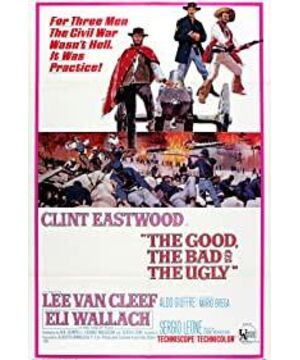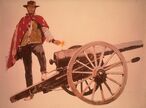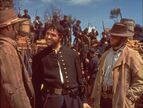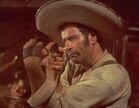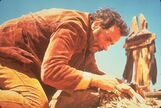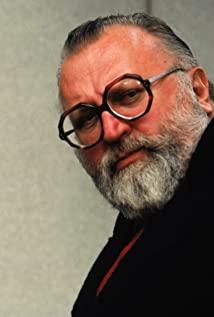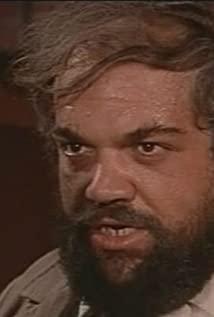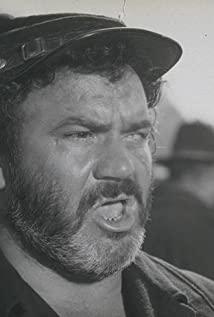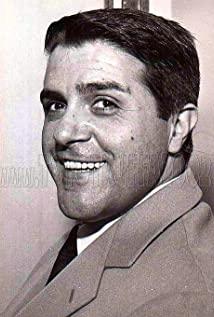1. Title
In 1962, the first "007 series" "Dr. No" came out. In addition to announcing the birth of the longest-lived film series in film history, it also brought a "revolution" in the movie title-this title is also in the entire "007 series" Continued.
In 1964, Sergio Leone had used the animation head in "Red Dead Redemption", coupled with the "whistle" created by Morricone, which is refreshing.
When it comes to the final chapter of "The Red Guardian", the animation headline still continues the style of the first two movies, but it has been fully upgraded from the length to the pattern, and has become one of the classic openings in movie history.
This very cool title at the time was the most ceremonial opening of "Italian Westerns" or "Macaroni Westerns", and it also indicated that "The Good, the Bad and the Good" is a masterpiece of "Italian Westerns".
2. Character appearance
The literal translation of the title of "The Good, the Bad and the Ugly" is actually called "good, bad, and ugly", which refers to the three main protagonists in the film: the good Brandi (Golden Retriever), the bad Santa (Angel Eyes), and Tuco the Clown.
In the film, the order of appearance of the three main protagonists is reversed. First, the clown comes on stage in a funny way, then the bad guy makes a brutal appearance, and finally the good guy comes on stage with humor and coolness.
Although the film defines the three main protagonists as "good, bad, and ugly", the so-called good guys are just clever and cunning bounty hunters with a bottom line. The bad guys are cruel but very creditworthy. The clown is indeed a harlequin, but he was born in one "If you don't be a priest, you can only be a gangster." He is actually a poor man, and there are some lovely things.
The appearance of the three characters indicates that this is a non-traditional Western movie-the boundary between good and evil, right and evil is blurred to a certain extent, and more importantly, it gives the characters a "grand" appearance. Sense of ritual.
In my opinion, "The Good, the Bad and the Ugly" is a comedy with violence as the carrier, but Sergio Leoni "officially" let the characters appear on the stage so as to bring the film's theater-like solemnity.
Between Zhuang and Xie is Sergio Leon's fascination with theater and ritual.
3. The Civil War
The story of "The Good, the Bad and the U.S." is based on the American Civil War. This story background may make the narrative of the film "grand", but Sergio Leone had no intention of this—in fact, the Civil War was Leone’s ritualized narrative mainly serves the needs of the plot.
The Civil War played an important "role" in promoting the progress of the narrative at least four times in the film.
The first time, and also the first time that the war as the background of the story appeared in the film.
In the hotel room, Tuco forced Brandy to put a rope around his neck, and Tuco prepared to retaliate and vent his anger by "using his own way, but also treating his own body."
Brandi's life is at stake, and only one accident can save him.
The accident occurred at the right time, a war shell hit the hotel room, the hotel collapsed, and Brandi escaped.
For the second time, Brandi was tortured by Tuco in the desert and died from dehydration.
At this time, the carriage carrying Carson, a soldier of the Southern Army, "passed", and Brandi "accidentally" became the only one who knew the secret of Carson's "treasure".
For this reason, he cannot die, and Tuco must save him.
For the third time, in the North Army prison camp, the good, the bad, and the ugly came together because of the "treasure."
For the fourth time, in a battle for "nothingness" between the Southern and Northern Army, Brandi and Tuco teamed up to blow up the wooden bridge, thus opening up the road to the cemetery.
Also in this fierce battle, Brandi sighed: "I have never seen so many people die meaninglessly."
He speaks of the emptiness of war.
War is the ultimate method of violence, so violence is also nothing.
This great war, in the eyes of Sergio Leoni, is nothing but a game of nothingness, just like his movie.
Every appearance of the Civil War in the film is a critical moment, and it is the best foil for Leon's "violent ritual".
4. Music in Morricone
Without Leone, "Italian Westerns" would not be established. Similarly, without Morricone, "Italian Westerns" would also be difficult to establish.
Leone and Morricone are elementary school classmates (seems to have been at the same table), and these two "good brothers" with similar backgrounds created "Italian Westerns" together.
Morricone deliberately avoided the traditional western soundtrack method when scoring the "The Red Dead Trilogy"-mainly symphony. He used rough, unrestrained trumpet themes and lonely, remote, and careless whistles. The solo was refreshing for the audience and gave the iconic characteristics of the "Italian Western".
In "The Good, the Good and the Ugly," Morricone’s soundtrack style is not significantly different from the previous two, but as the film becomes more and more full, Morricone’s soundtrack is also more familiar, such as Tuco running wildly in the cemetery. The MV of the movie may be a bug in other films, but in the hands of Morricone, he used cheerful and passionate music to resolve the boringness of monotonous high-speed photography, and brought wonderful audio-visual enjoyment to the audience.
5. Theater time
"Red Dead Redemption" is only 99 minutes, "The Good, the Good and the Ugly" is 132 minutes, and the full version of "The Good, the Good and the U.S." is 3 hours long, which is the length of the American "epic film" in the 1960s.
After "The Good, the Bad and the Gold", Leonie filmed another classic series "The Past Trilogy"-"Reminiscence of the West" (1968), "Revolution of the Past" (1971), "Revolution of the United States" (1984). In this series, the shortest is "Revolutionary Memorabilia", 157 minutes, while the director's extended version of "American Memorabilia" lasts more than four hours (251 minutes).
Generally speaking, the time for theatrical performance is about three hours.
When Leon was in control, the length of his film roughly coincided with the time of a theatrical performance.
Perhaps Leonnet’s production of such a ritualized film just shows that he hopes that the audience can get the sense of ritual of watching a drama in the theater when watching his film. After the popularity of movies, the sense of ritual brought by drama is more prominent. NS.
6. The duel ceremony
A duel in the cemetery has become a classic in film history, and the use of close-up shots and editing skills does not require me to elaborate.
The actual time of the events in this scene should be an instant, but Leoner has continuously extended the time through progressive editing, which creates a sense of tension and also achieves the "ritual sense of this duel". ".
This scene is also the climax of the whole film as a carnival ceremony.
The huge cemetery made the entire duel seem to be held in the ancient Roman Colosseum, and the good, the bad, and the ugly also seemed to have completed an ancient Roman-style duel.
The ancient Roman gladiatorial battles were bloody and cruel, but the cemetery duel ended in a straightforward manner after the "solemn ceremony"-the violence had been eliminated in the ceremony.
7. Ring Trilogy
After completing the "hospice care" for the wounded, the good man Brandi got the iconic cloaks in "Red Dead Redemption" and "Fistful of Dusk".
Judging from this detail, "The Good, the Bad and the Ugly" should be the "prequel" of "Red Dead Redemption" and "The Fistful of Twilight".
However, from another perspective, "Red Dead Redemption" is "for a little money", "The Fistful of Twilight" is "for more money", and "The Good, the Bad and the Ugly" is obviously "for the most money." The number is increasing, and the Fistful of Dollars has also grown from one to two to three, and "The Good, the Bad and the Ugly" has become the "final chapter."
In fact, there are certain differences in personality and behavior in the "Funker" played by Clint Eastwood in the three films. The audience can completely think that these three roles are not the same person.
In other words, Clint Eastwood in the "Funker Trilogy" interprets the story of three "Funkers".
We can also understand the detail of the cloak as a joke that Leonard made to us—his "little trick" made the "Funker Trilogy" a "ring trilogy", and the "final chapter" is the "initial" Chapter" begins, and the "initial chapter" leads to the "final chapter".
8. Dispel violence with ritual duel
All films directed by Sergio Leone are full of violence.
Every time I watch his works, I get a huge pleasure. This pleasure comes from the violence in the film, but it dispels the violence in my heart.
The violence in Sergio Leone’s films is different from the naked violence in "The Irrevocable" and "The Realm of the Senses", and it is also different from the cold violence in the works of directors such as Haneke.
His violence is ritualized, and the result of ritualization is to eliminate violence.
After Leone, the violence was ritualized in the movie. There is Wu Yusen in Hong Kong and Quentin Tarantino in the United States.
After watching their movie, I want to say--
In the movie, we have so many and so beautiful violence. In reality, we don't need violence anymore.
View more about The Good, the Bad and the Ugly reviews


